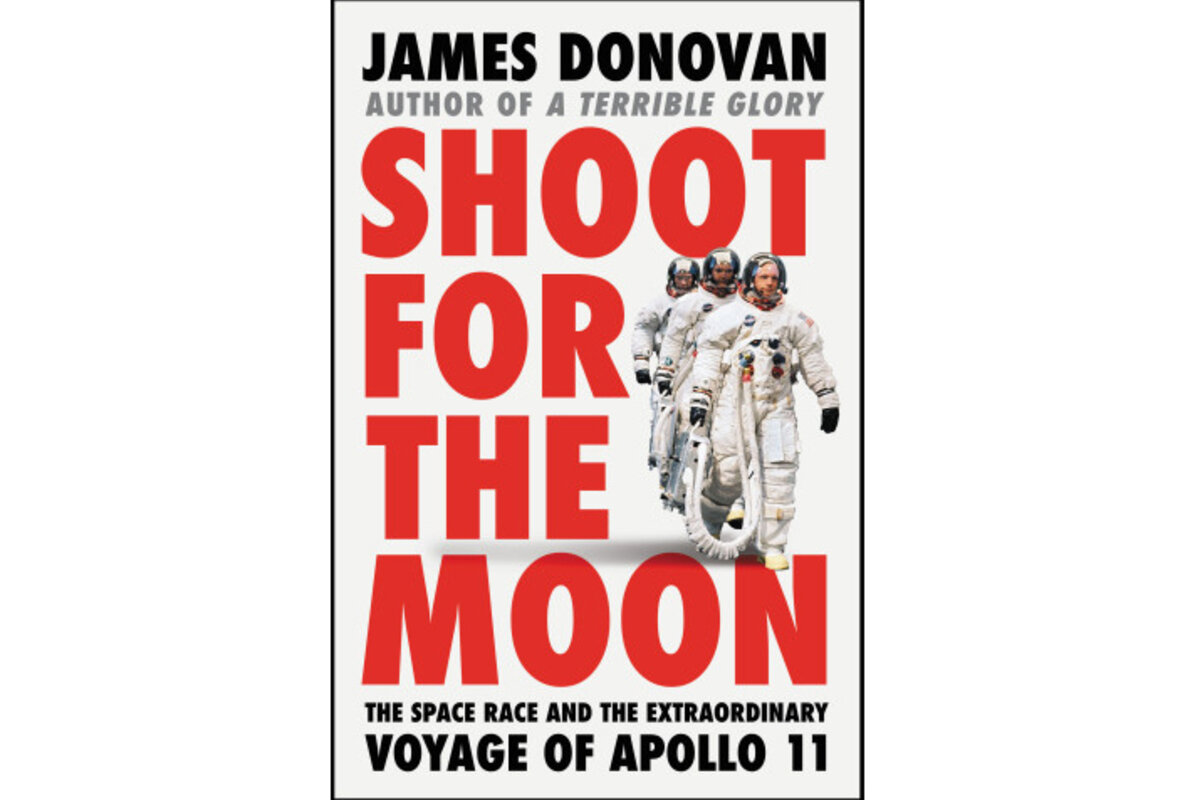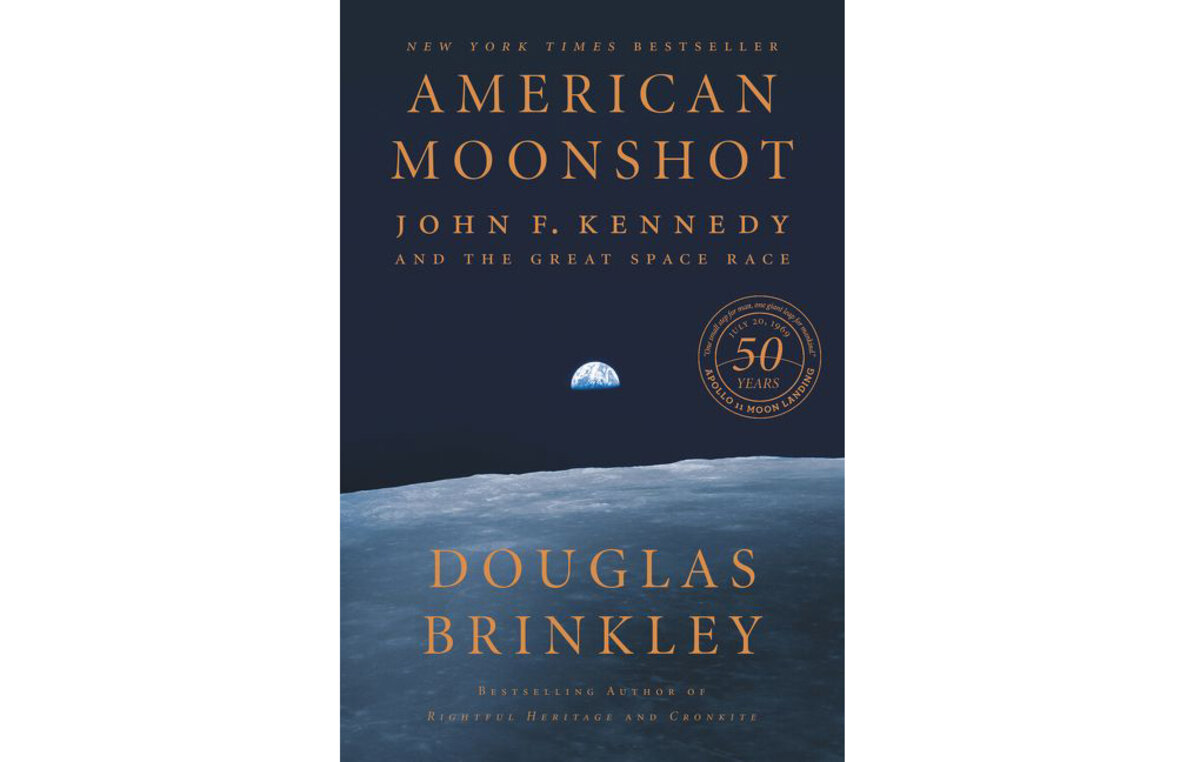The Apollo 11 moon landing and the men who made it happen
Loading...
This month marks the 50th anniversary of the moon landing in July 1969. President John F. Kennedy had announced this ambitious goal to Congress on May 25, 1961, in which he said simply: “I believe that this nation should commit itself to achieving the goal, before this decade is out, of landing a man on the moon and returning him safely to the Earth.”
Two books, James Donovan’s Shoot for the Moon: The Space Race and the Extraordinary Voyage of Apollo 11 and Douglas Brinkley’s American Moonshot: John F. Kennedy and the Great Space Race, tell the complicated story of the moon landing, as well as the birth and evolution of the aerospace industry.
Donovan concentrates on the men who made the unprecedented journey. The Apollo 11 astronauts come to life in his vividly readable pages, and each is a vigorously drawn personality, despite what our author notes is, well, a certain sameness in the crew. “All were from small towns, all were middle-class, all were Protestant, all were white ... and each an only or eldest son,” Donovan writes.
The race into space began in earnest in November 1957, after the Soviet Union launched Sputnik 2 in orbit with the dog Laika on board. That mission proved that a living creature could survive in orbit; from that point on, the idea of humans in space was inevitable. Orbital technology quickly expanded to lunar technology.
The Apollo moon mission was the vision of one man. As Apollo 17 commander Gene Cernan said in 1999: “‘President Kennedy reached far into the twenty-first century, grabbed a decade of time and slipped it neatly into the 1960s and 1970s.’”
Kennedy is the focus of Brinkley’s “American Moonshot,” which is not only the best of the Apollo 11 books to appear so far this year but also, surprisingly and pleasingly, the best biography of Kennedy published in years. Here as in all his books, Brinkley is a generous, beguiling writer; he takes readers on a longer narrative of Kennedy’s life in order to show them the man behind the moonshot – and attempt to plumb his motives. “JFK was the driving spirit putting America into the business of space, yet his motivations remained something of a mystery to [astronaut John] Glenn,” Brinkley writes. “Was it just smart politics? Or did Kennedy truly enjoy the prospect of a manned voyage to the moon?”
Brinkley’s answer is refreshingly complex. His Kennedy was always moved as much by the heroism of the endeavor as he was by the pragmatic need to win the space race against the Soviets. He combined these drives into a dream that was bigger than the sum of its parts, and as Brinkley points out, he was ideally placed to get that dream off the ground. “Only one top-tier Cold War politician had the audacity to risk America’s budget and international prestige on such a wild-eyed feat within such a short time frame: in John F. Kennedy, the man and the hour had met.”
Today, the commemoration of the triumph of Apollo 11 isn’t all about the past; it comes with one eye cocked on the news of the day. Whether it’s the Chinese or the Americans or some private enterprise, the question today is this: Will humans ever return to the moon? Brinkley is skeptical: “The answer is that it takes a rare combination of leadership, luck, timing, and public will to pull off something as sensational as Kennedy’s Apollo moonshot,” he writes about the U.S. “Today there is no rousing historical context akin to the Cold War to light a fire on a bipartisan public works endeavor.”
We did it before. Will we do it again? Time will tell.








